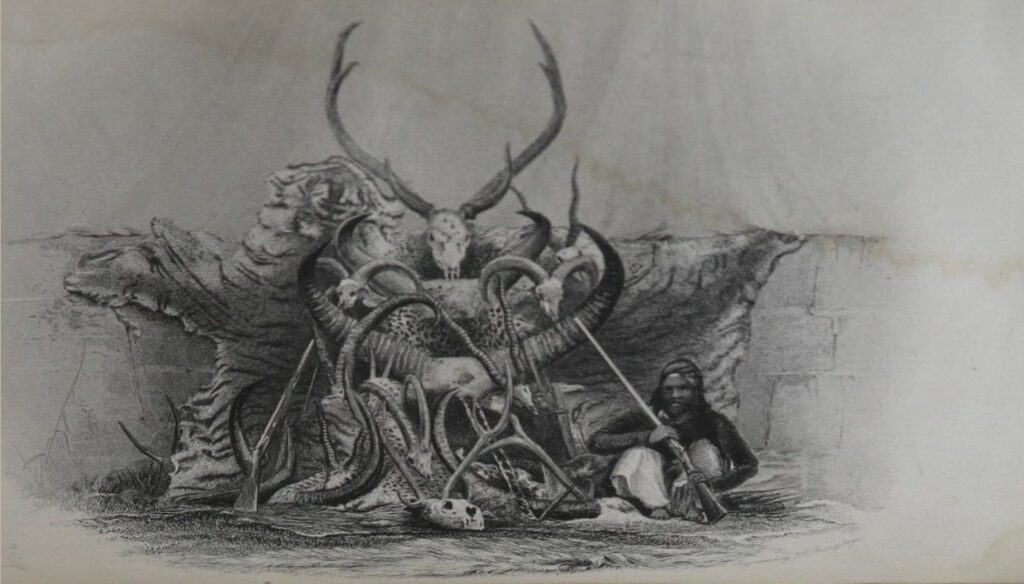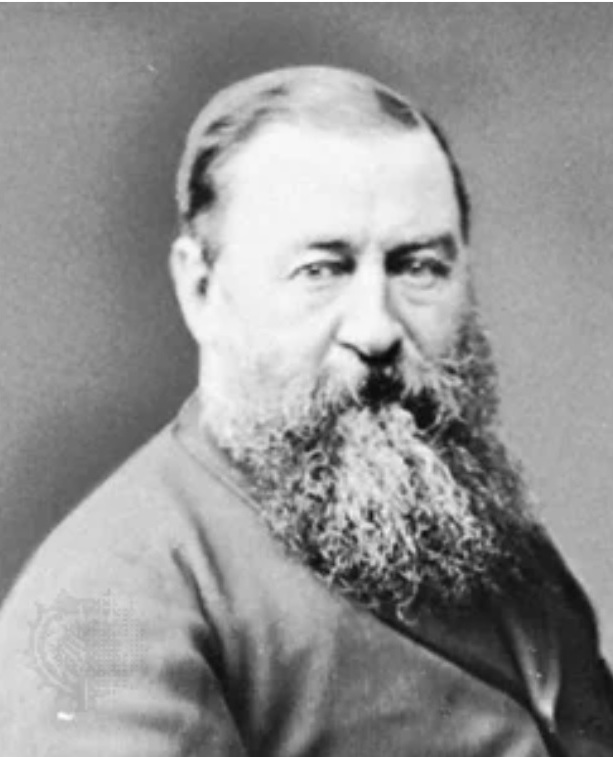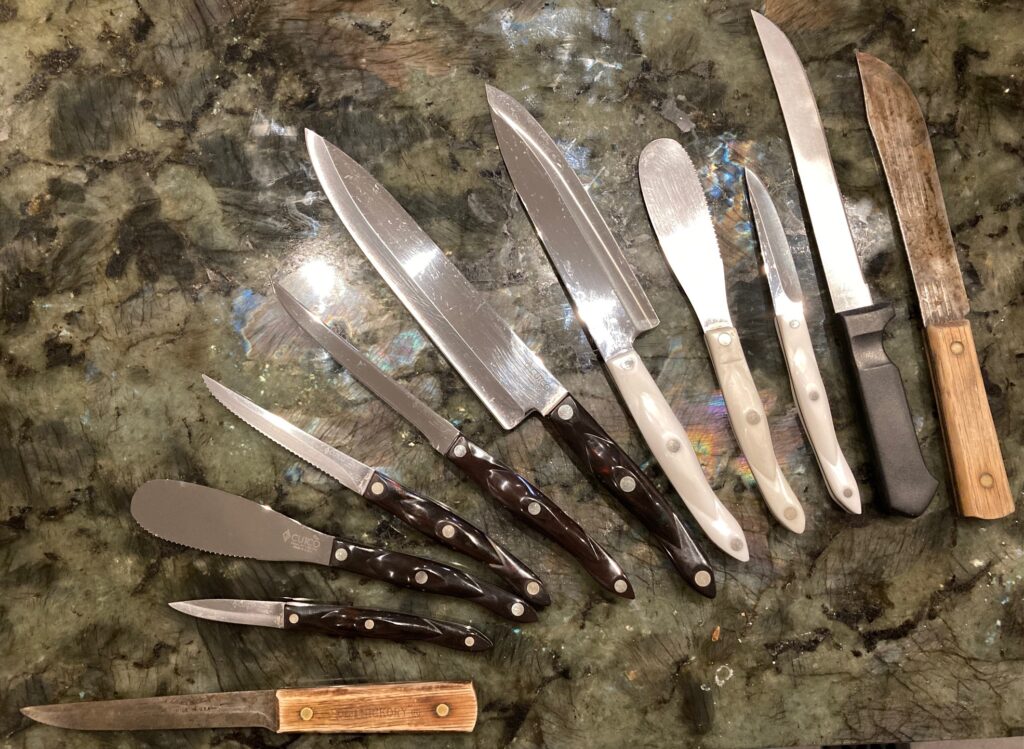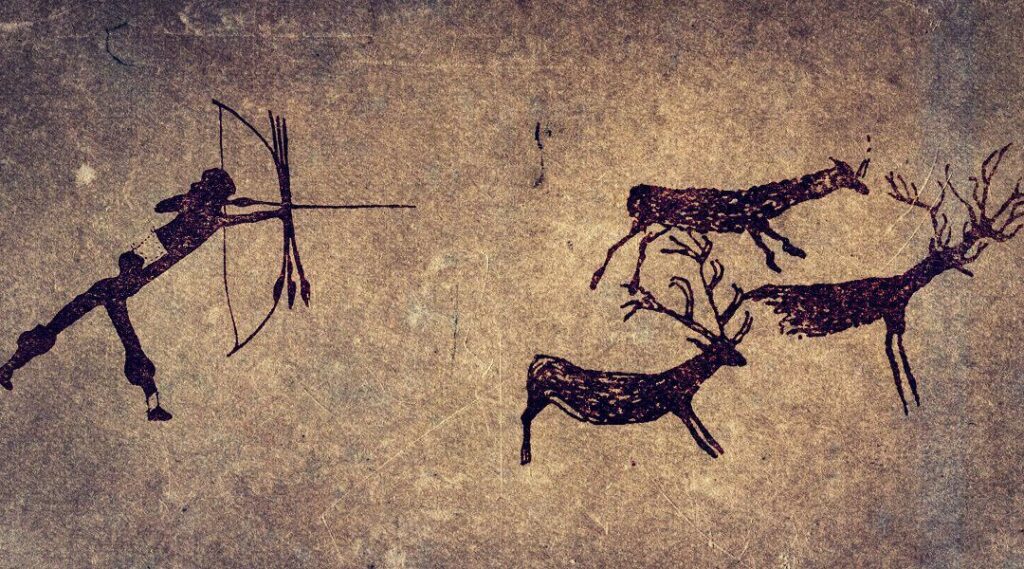Posts Tagged → animal
Life and Love of the Knife
Since God created us humans, either in one quick master stroke or through a series of evolutionary steps (I don’t know which one and I don’t really care, because God is all powerful and can do anything He wants, and all we puny humans can try to do is figure it out as we muddle along), we have had a love affair with sharp edges. Blades, that is, which give our amazing but soft and weak hands the ability to cut, slice, stab, and pierce dangerous foes and animals, and render them into delicious roasted brontosaurus steaks. As Mogli says in “A Jungle Story,” his antagonist, the massive male tiger Shere Khan, may have his big teeth, but “I have my own tooth,” a sizeable steel knife blade affixed to a sturdy and dependable handle, with which Mogli is indeed a significant foe to all who would eat him.
To humans, the knife in all its forms – skinning blade, meat slicing blade, spearing blade, or stabbing sword blade – is our tooth, claw, and fang. It is our defense, a lifeline, and third arm in a world where most of the critters we have hunted, eaten, and clothed ourselves with often have a mouth full of knives as well as heads and hooves adorned with sharp and pointy edges, any one of which is instant doom to us. As a brief visit to the dinosaur and modern reptile exhibits in any respectable museum will show, we humans inhabit a world where history has had most of our battles and warfare with men and beasts alike determined by who had the bigger, faster, longer, sharper knife blade.
The Pleistocene is where modern humanity and our knives and spear blades came into Yin and Yang fusion, resulting in the extermination of even the largest and most dangerous of wild animals. And well into the 20th century, men everywhere across the planet daily adorned themselves with blades both practical and beautiful. In a world that is still always dangerous, blades have always represented us humans, and men in particular, as both useful and dangerous.
So is it any surprise that even today, in our sickly society filled with Toxic Femininity, men, particularly men, still have a love affair and deep personal connection with knives and blades of all sorts? It’s almost spiritual. Knives and sharp blades have been our constant companions since our species gained consciousness, and knives have been all that stood between us and death for over a hundred thousand years. Often in a hunter-gatherer society, a good knife is all a man needed to live a comfortable life. Nowadays, we habitually carry small pocket knives by Case so that we can accomplish small home chores easily. Serious blade length reduction! How far we have fallen! Are we still men, armed only with our tiny folding pocket knives?
I say yes, we are.
Because like so many millions of others, I am a masculine man and a not a Low T feminized and pathetic freak of self-loathing nature, and because I am an outdoorsman, and because I am against being or feeling helpless and defenseless, I use sharp blades all the time. A sharp edge is always on me or near me, so that a threatening saber toothed cardboard box can be quickly broken down and put into the recycling bin. That always makes my woman feel like the tipi is properly sorted out. Like thousands of generations of men (M-E-N of nose, ear, and back hair variety) before me, my appreciation and love of the knife has resulted in a life of the knife, and I celebrate that. It keeps me thoroughly human.
If you are a guy (born a man with a penis) or a practical woman (a human born with a vagina and female reproductive parts), or even someone caught in between both genders and yet nonetheless afflicted with a strong streak of self preservation and practical ability, I strongly suggest carrying the largest and most robust blade you can legally and practically use every day. Or just get some CutCo knives for your kitchen. It will make you feel like a million bucks, at night your hands will naturally paint beautiful primitive cave art on the walls of your basement, and you won’t ask yourself where that innate skill suddenly came from….because you will be acting organically like a natural and properly kitted out human being. These things naturally flow from one to the next.
Just be careful not to get too carried away with this knife thing. Buying knives easily becomes a habit or even an addiction. All for the right reasons, of course. It is hardwired in us.
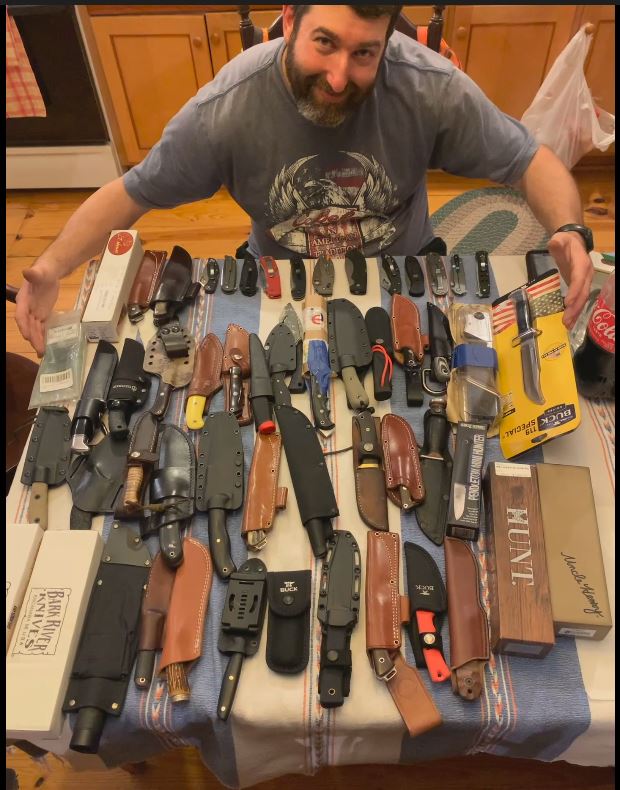
My buddy Irv has a knife problem. As an electrician, he has many opportunities to seriously test all kinds of pocket knives and knife steels. But he yearns to strap a dozen sheath knives on and prowl the woods. He has significant back hair, too, because he is a man.

Two original Stone Age tools. A flint hide scraper (top) and a chert butchering knife from Upstate New York
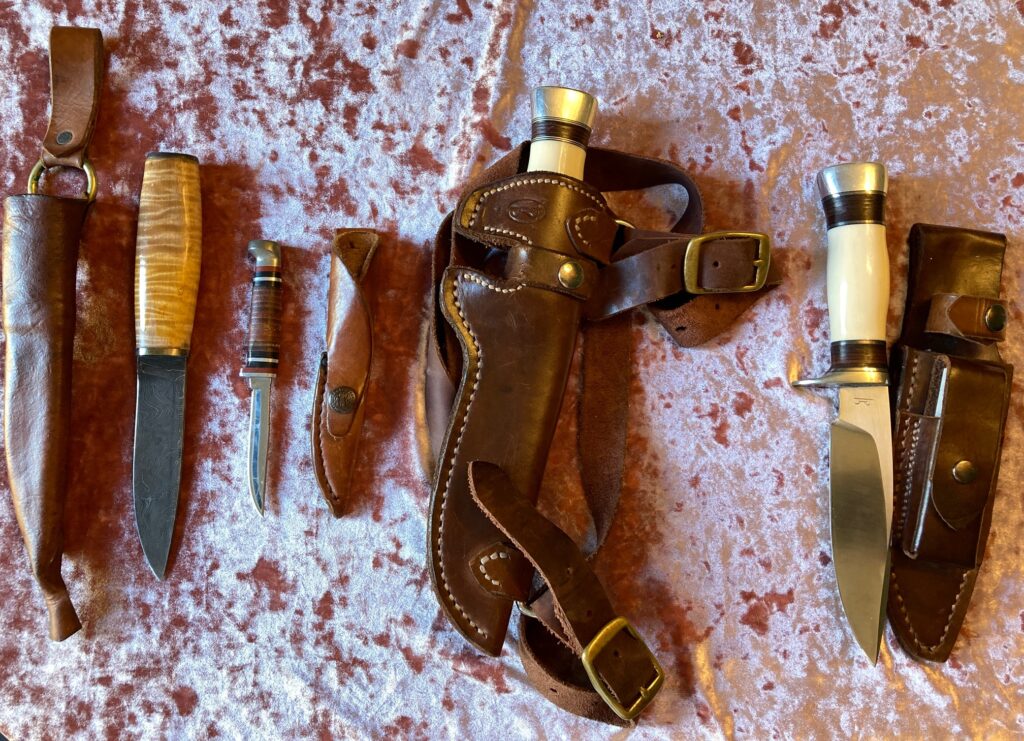
A very small slice of the hunting knives we have at our reach here, including a matched ivory micarta handled pair of Randall copies for my son and I by Perry County maker John Johnson each complete with over-the-shoulder baldrics and belt sheaths.
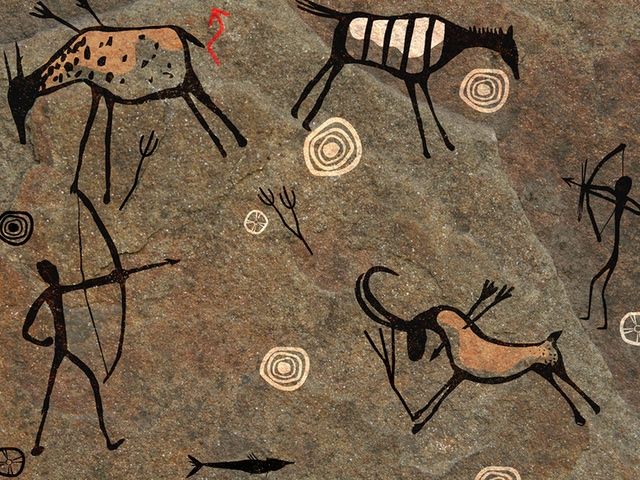
Pronged spears and sharp arrows (sharp blades on flying sticks) from about twenty thousand years ago. Still the best hunt around.

Super cheap WalMart special faux Damascus steel Japanese style kitchen knife is still very sharp and an an incredible tool
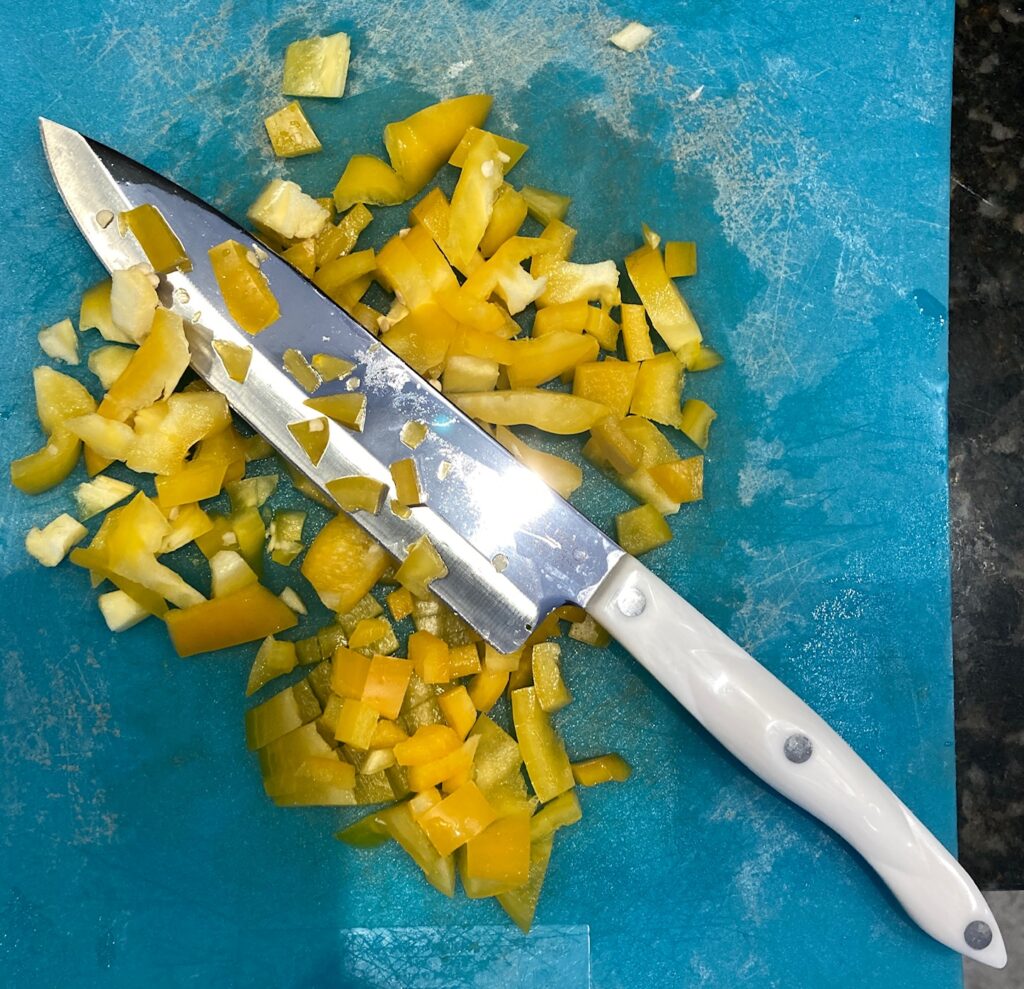
USA-made CutCo, definitely not a cheap kitchen knife, with excellent blade steel and bombproof handle material. Highly recommended.
Primitive hunting techniques are more important than ever
In this day and age of popular stainless steel and plastic hunting rifles and Hubble telescope-sized rifle scopes, primitive hunting techniques and weapons are more important than ever. Something in the bad age of video games and instant gratification happened to the American character in the past thirty years or so, and so many young Americans have become lazy and even a bit heartless, as a result. Hunting culture has suffered from this, too. Really badly. Today’s focus seems to be predominantly on the kill, and much less on the process of the hunt.
Those curious about the distinction here should look up some neat videos from real hunters in the big woods of Vermont, Pennsylvania, and the Adirondacks.
Hunting should never be just about, or mostly about, killing an animal. Especially if the hunter wants to call it a trophy and put it up on his or her wall as a representation of his skill.
People trying to justify 300, 400 yard long range shots (or farther) on unsuspecting animals are not hunting, they are assassinating. Their wood craft often sucks, their field craft is limited to wearing camouflage, and their knowledge of the game animal is negligible. They are not really hunters, but rather shooters. Their high-tech guns, ammo, and rifle scopes are a crutch diminishing their need for good woodcraft, and it also results in a lack of appreciation for an actual hunt, and a lower value placed on the animal.
Culling oversized wild animal populations for the benefit of the environment is one thing, but hunting wild animals for pleasure and clean meat should be accomplished with skill. Age-old skills that everyone can respect. Hard-won wild animals taken with real skill under fair chase conditions are all trophies.
An unsuspecting big game animal assassinated at long range (or worse, inside a high fence, or over bait) requires very little hunting skill, and can never be said to be a trophy that is reflective of the hunter’s skill set. And yet isn’t this why so many hunters want big antlers and broad hides? They see these big animals as a reflection of their hunting prowess, of their manhood, their chest-thumping status within the outdoors community. As a result, America has developed a hunting culture driven by bigger-is-better trophies, at any cost, all too often achieved through long-range assassinations of unsuspecting wildlife, or over bait. Fair chase, which has always been at the heart of hunting, has been tossed away in favor of quick gratification and unfounded ego bragging rights.
The primary reason why primitive hunting weapons are so important today, is that someone has to keep the culture of hunting alive. What is a primitive hunting weapon? Pretty much any legal implement that requires the hunter to work hard to develop unique field craft/ wood craft skills, including the ability to penetrate within a fairly close range of the prey animal’s eyes, ears, and nose: Any bow (compound bow, stick bow, self bow, longbow, or other hand-held vertically limbed bow), spear, atl-atl, open-sighted black powder or centerfire rifle, any large bore handgun with or without a scope, should qualify. Flintlocks, percussion cap black powder muzzleloaders, and traditional bows are especially challenging to master and to harvest wild game with.
All of these primitive weapons require the hunter to actually hunt, to rely upon his woodcraft to carry him quietly and unseen across the landscape, and into a fair and close range of his prey animal. Animals taken with primitive weapons and techniques are earned in every way, and therefore they are fully appreciated.
Few experiences bother me more than watching some internet video of a fourteen year-old hunter running his hands over the antlers of a recently deceased buck, and listening to this inexperienced mere child discuss the finer aspects of this rack, its inches, its points, its relative size, and its (barf on my feet) trail camera name. Usually the child has shot the deer from an elevated box blind that conceals all of the hunter’s scent, sound, and movement. Whoever has taught these kids to hunt this way exclusively, and to then look at deer harvested this way as so many bragging rights, has done a huge disservice to these kids. These kids are going to grow up into poachers and baiters, always trying to prove how great of a “hunter” they are, and how studly and manly they are, at any cost. They will end up doing anything to score the next “record book” animal. These young kids who are being warped right now with this trophy nonsense are the future of America’s hunting culture, and what a crappy culture it will be if it is dominated by big egos and even bigger mouths armed with sniper rifles and no actual hunting skill.
Moms, dads, grandpas and uncles who are beginning to teach kids to hunt right now can do two simple things that will ensure their little student grows up into an ethical, responsible, high quality, law-abiding hunter: Make them use open sights on single-shot firearms and bows.
The skills that young hunters develop from having to rely on open sights and single shots (primitive weapons) will force them to achieve a high level of field craft, wood craft, and fair chase values. Developing skill requires a person to overcome challenges and adversity, often making mistakes along the way. And that results in better character.
Forcing kids to get close to their prey animal, and to take only carefully aimed shots with just open sights, will result in people who become really excellent hunters. Adults can always opt to add a scope to their rifle as their eyes age, but the lessons learned early on in concealment, controlling movement, playing wind direction, and instinctive shooting will keep the respectable art of hunting alive and well.
This Fall, get your little one started on a flintlock or old Fred Bear recurve bow from the get-go, for squirrels and deer, and watch as a true hunter is born.
What is hunting?
With hunting seasons drawing to a close here in Pennsylvania, it is worth the time to revisit an old question, which is What is hunting?
We ask because, without question, non-hunters overwhelmingly support hunting that is fair chase and purposeful. That is, hunters who are seen by the public to be respectful of our prey are recognized as a positive force, and worthy of continuing their pastime.
Every scientific opinion survey asking Americans their opinion about this subject for the past several decades has yielded the same result: Hunters who actually hunt get respect and support from non-hunters. On the other hand, people who are perceived by the general public to be casually killing animals just for pleasure or for “trophies” usually do not garner much support.
While there is a lot for us to talk about with even just the survey question itself, like how America has become so urbanized and thus our people so distant from the natural resources and processes that feed and clothe us and wipe our butts (toilet paper from trees harvested in forests) etc, this particular question, and its answer, is most important because hunters are a minority of a minority in America.
Positive public opinion about hunters and hunting is necessary to the continuation of regulated hunting as we know it and as it has been practiced for the past 100 years.
Given that American hunters are lamentably awash in a sea of soulless plastic and stainless steel rifles these days, whereupon the Hubble Telescope-equivalent scope is mounted, many owners of these contraptions are regularly and quite naturally tempted to attempt military-grade long distance sniper assassinations of far-off big game animals.
Though fleet of foot, strong of heart, and equipped with majestically sensitive noses, ears, and eyes, these animals cannot compete with humans who are so far removed from the natural zone of awareness these animals’ senses otherwise provide them. This begs the question of whether or not long-long-distance shots at these clueless animals are actual fair chase hunting, or are they incautious and disrespectful maltreatment of animals we otherwise admire.
Honestly, this stark question brings to my mind the images of charismatic megafauna hand-painted on cave walls by our spear-wielding ancestors: Rhinos, gigantic cave bears, massive aurochs, lions, zebras and wild horses, bison, etc. dangerous animals all, taken at great personal risk and at bad breath distance, contrasted with today’s ego-driven high-fence “trophies” mounted on manicured man cave walls around America, animals snuffed out without a chance at fight or flight. The cave paintings were the Sistine Chapel experience for paleolithic humans, and today’s manicured egocentric faux trophy rooms are very sorry substitutes. Authentic versus fake, they couldn’t be more different from one another.
So, a bear or deer taken with a bow, a crossbow, a spear, an atlatl, a blowgun, a shotgun, a flintlock or percussion muzzleloader, or a modern muzzleloader or rifle with open sights seems like a pretty natural example of fair chase. The 400-yard Hubble Telescope plus “500 Magnum Killem” caliber assassination of the unknowing and unsuspecting beast is just that, an assassination. Is there anything fair or chase about it?
Just as political America now requires a return to our simple and beautiful founding principles, so will our hunters benefit from returning to mastering the basics of early American woodcraft, the ability to sneakily slither and glide into the wind across a landscape to get within the animal’s sensory zone and make an honest and competitive kill. This kind of field craft is the essence of fair chase.
Artificial reliance by hunters on high tech is embarrassing, to tell you the truth of how I feel. Repent and return to the basics, brothers and sisters! Our fellow Americans who do not hunt will not only support us, they will admire us, and as a result of their admiration our outdoor lifestyle will have a much greater chance of surviving beyond the high tech culture that is otherwise crushing everything natural and alive in its unwholesome path.
Thank you to wildlife’s friends, my friends
When I started writing for Eric Epstein’s Rock the Capitol about eight years ago, one of the first stories I related to readers was an experience two of my children and I had with two pitbulls let off their leashes.
The readership statistics on this one essay were off the charts. Very high volume, and lots of comments. When I asked why, Eric and his website manager, whose name I now forget, told me that news items and stories involving animals claim the biggest share of attention on the Internet.
Fascinating, right?
And we all kind of see this fact in the strange way people routinely show concern for an injured goat in the news by donating a million dollars so the goat can get its broken hoof fixed, and then a truly sad situation involving some news story about a poor unfortunate child whose abusive parents tormented her for years raises just five bucks to get her into a better home.
It is true that people care about animals, and that is a good thing. But this care seems to extend mostly, really overwhelmingly, to domesticated animals; animals that depend upon humans for care and shelter. A natural and healthy empathy is aroused when some unfortunate critter is seen hemmed in by wire or caging, unable to provide for itself and yet not being provided for by the humans around it.
The type of animals people have the least identity with is wildlife. Most Americans, being urban or suburban, simply mythologize wildlife.
From this more urban view, all bears are universally perceived as aggressively dangerous (they are not, though grizzlies are definitely more aggressive than black bears). Deer run out in front of our cars, eat our crops, spread ticks with Lyme Disease, and nibble our yard shrubs, dammit. Squirrels are nasty tree rats with fuzzy tails chewing on our yard furniture, eating the produce of our gardens and fruit trees, and diving our trash bins. And skunks, possums and raccoons are a bunch of rabies-ridden trashcan raiders. And so on.
Wildlife by and large is not greatly appreciated by the general public, unless it is a close-up photo of some baby raccoon or fox kit. And no, I am not talking about wildlife photographers or the insane Humane Society as representative of the general public. These two categories of people are far distant outliers of one sort or another, and no generality can be drawn from their presence among or about wildlife.
So thank God there are sportsmen out there; that is, hunters and trappers. These are the Americans who really do truly care for and about wildlife, and they prove it every damned day with their financial donations and back-breaking work on wildlife habitat projects.
There is no better advocacy group or aggregation of active people who love wild animals and the wild places they need to thrive than hunters and trappers. Time has proven this fact, though the foolish flatlander will claim, with a mouthful of gross stockyard beef in her mouth, that hunting and trapping are “cruel.”
Most of our public lands were first acquired by and for hunting and trapping, at the urging of hunters and trappers. They knew in the 1890s and 1920s that human encroachment into formerly wild areas was leaving no room for the most interesting animals on earth. Many of these animals are more interesting than most of the humans we will encounter in any given day, week, month, or lifetime.
This weekend I really enjoyed my time among a special group of people, the state-wide leadership of the Pennsylvania Federation of Sportsmen and Conservationists (PFSC), what until yesterday was known as the Pennsylvania Federation of Sportsmen’s Clubs (PFSC). Most Americans no longer know that the word “sport” is about hunting, fishing, and trapping, nor do they know what a ‘sporting club’ is about. The lexicon has changed as the daily experience has changed. Meat is no longer acquired from a wild animal who knew it was hunted, but rather from a miserable creature tormented from its earliest days until its last moment alive and turned into a convenient styrofoam package.
The PFSC folks are the people who work every day for the benefit of wildlife, for wildlife habitat, for the defense and promotion of our state parks, state forests, and state game lands. These people do it humbly, quietly, generously, and usually all they get in return is some self-satisfaction from sitting back after a grouse hunt and, despite an empty game bag, intently watching a mysterious red Fall sunset streaked with white wispy trailing clouds sinking down behind shadowy trees shedding their colorful leaves. A deeply comforting stillness overtakes these people at these moments, alone or with companions, and when they go home that night, they know their decades of work fundraising for the latest land acquisition by the Wildlands Conservancy has paid off. It might be a relatively small nook in a big world, but it is a special nook nonetheless, where wildlife — wild animals unknown and unloved by most people — can call home until the next glacier comes through and re-orders the earth’s surface, as has already happened many times in the past.
Here is to you, a heartfelt thank you, my friends, my companions, my betters and my teachers among the outdoorsman fellowship. Thank you for your time and gift to me and to everyone and every living thing around me, whether they know or know not what you do for us.
PSA: Please Keep Pets Inside
A pet is an animal that lives in a house.
Pets that are allowed to run freely out the front or back door, to cavort, chase, defecate, and frolic off its owner’s property and in Nature’s wide open beauty, are by definition feral.
Once out of the house or off the leash, these feral animals become capable of great destruction and usually accountable to no one. They also can easily be eaten by other feral animals and by coyotes, foxes, owls, and hawks. Or hit by a car.
Cats and dogs can get into traps set for fox, raccoon, coyote, and other furbearers.
Some of these traps merely restrain the animal by the foot. They do not break bones or cut skin. But other traps, like Conibears, will crush whatever sets them off, including a cat’s body or a dog’s face. If this possibility bothers a pet owner, then think of your animal’s safety, and do not let it run on someone else’s property; keep the pet under control at all times.
Audubon International estimates that feral cats alone wreak terrible destruction upon native songbirds, already under pressure from excessive populations of raccoons, skunks, and possums, killing hundreds of millions of colorful little birds annually.
Feral dogs bite people, chase wildlife, and poop on others’ property.
In most states, a dog seen chasing wildlife is subject to immediate termination. In fact I lost my favorite pet, a large malamute, after he broke out of his one-acre pen and a local farmer witnessed him gleefully chasing deer. Months later the farmer deposited the dog’s collar and name tag in the back of our pickup truck, told my dad where the carcass was buried on the edge of his field, and walked away. I was already heartbroken, but what could we say? Our dog had broken the law.
No responsible adult allows a pet to become feral. When it happens, it means the owner no longer really cares about the animal.
If you are a pet owner, please show that you care by keeping the pet safe inside your home. Everyone will thank you for it, especially your precious animal friend.
Hallelujah, fur is back in style
A wonderful evening stroll down Fifth Avenue reveals that among the world’s top fashion professionals, natural fur has made a 100% comeback.
Clothing that even I recognize and admire as stunningly beautiful is covered, trimmed, made of, and surrounded by natural furs from many species of animals.
Recall that animal fur was denigrated as cruelly gotten, and bored activists would scream at people wearing fur, sometimes throwing red dye on them. The shallow activists never addressed how their leather shoes and belts and purses and car seats squared up with their public opposition to people wearing other sorts of animal skins.
If hypocrisy is a hallmark of screechy activists, fur was the best example.
Fur is, after all, natural, biodegradable, renewable, and under modern wildlife laws, sustainable. Those are all rare qualities in a world filled with cheap plastic junk manufactured in an enormous prison camp called China.
The luxurious furs I looked at represented incredible skill. From the trappers who artfully snared the critters without damaging the pelt, to the tanners who carefully turned them into soft leather capable of being worked, to the cutters and seamstresses who took the supple leather (with the hair on, like a cow hide) and turned them into gorgeous clothes, throws, and warm accoutrements, the entire process is a long chain of long-enduring skills and appreciation of natural beauty and utility.
If fur was long politically incorrect, but now it is acceptable among the PC elites who run the fashion industry, what does this say about the philosophical leanings of the individuals behind this surge? One cannot help but think that the many gay men in the fashion industry, once emancipated in general society, would eventually hew to a more pragmatic view of life and politics.
After all, once you own a home and work for people willing to spend thousands of dollars on a single garment, you really do have a stake in the capitalist enterprise.
Perhaps the fur on display at Bergdorf Goodman, Saks, and other stores I looked at is a social statement by a bunch of quiet pragmatists, who have also had it with the faux anger and the overwrought hostility and the ubiquitous unhappiness that characterize Leftist politics.
Well done, chums.
And as a pretty bad but committed trapper myself, thank you.
